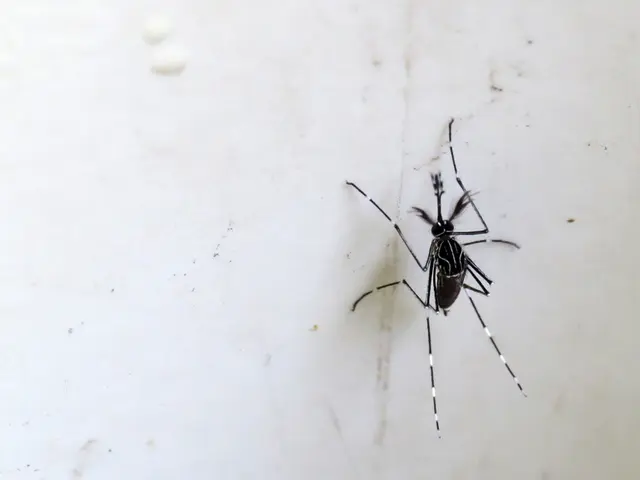Daily Health Update, April 16, 2025: A compilation of the latest health-related news.
Dismantling essential divisions within health agencies like the Centers for Disease Control and Prevention (CDC) and the Department of Health and Human Services (HHS) poses significant and various risks for public health.
The closure of specialized departments, including infectious disease labs and the Division of Blood Disorders and Public Health Genomics, weakens the nation's ability to identify and manage outbreaks. This results in unsustainable pressure on local resources, reduced diagnosis speed and accuracy, and an increased risk of outbreaks of foodborne illnesses, tuberculosis, and other contagious diseases[1][2].
Moreover, critical data collection and scientific monitoring are halted, making it challenging to track disease trends, evaluate public health interventions, and make informed policy decisions[1][2].
Furthermore, there are disruptions to programs addressing health disparities and equity for vulnerable populations. With significant cuts or dismantling of programs targeting maternal health, substance abuse, mental health, and support services for children with disabilities, youth experiencing homelessness, and low-income families, these already vulnerable groups are left without essential support[5].
Terminating staff responsible for maintaining federal poverty guidelines jeopardizes eligibility determinations for key assistance programs like SNAP, Medicaid, and housing support[5]. Similarly, programs designed to reduce health disparities by addressing the unique needs of marginalized groups are being eliminated, leading to widening health inequities[5].
Moreover, large-scale layoffs result in the loss of experienced staff, eroding institutional memory and the ability to respond to ongoing and emerging health threats[3][5]. The abrupt dismantling of divisions also disrupts longstanding collaborations between federal, state, and local agencies, as well as partnerships with patient communities and healthcare providers[2][5].
These actions, carried out with speed and scale, mean that rebuilding these capabilities could take years, during which time preventable hospitalizations and deaths may increase, and public trust in the health system may be undermined[3][5].
In conclusion, dismantling key divisions within the CDC and HHS endangers the nation’s ability to detect, prevent, and respond to infectious diseases, while also exacerbating health disparities and weakening the social safety net that supports vulnerable populations[1][2][5]. These actions are cause for concern, as the long-term consequences may impact public health for years to come.
- The impacts of dismantling health agencies like the CDC and HHS extend beyond infectious diseases, affecting areas such as mental health, women's health, and health-and-wellness, as the loss of specialized programs targeted at these issues leaves vulnerable groups without necessary support.
- Affected programs include those addressing maternal health, substance abuse, and support services for children with disabilities, youth experiencing homelessness, and low-income families – all of which contribute to challenging health disparities and equity for marginalized populations.
- Moreover, crime-and-justice and general-news outlets have reported on the pervasive rescinding of federal poverty guidelines, jeopardizing eligibility determinations for essential assistance programs like SNAP, Medicaid, and housing support, further exacerbating hardships for already vulnerable populations.
- In the larger political landscape, these events indicate an unsettling erosion of commitments dedicated to public health, war-and-conflicts, and social justice – elements whose importance will require years of effort to rebuild and address the increasing health disparities and distrust in the health system they have triggered.








